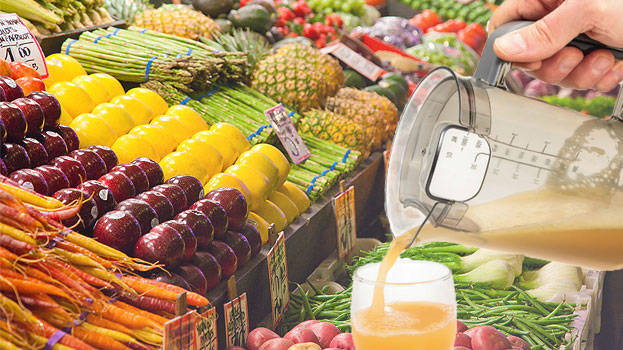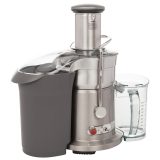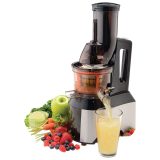 You’ve probably heard about those trendy “juice cleanses” that people go on to supposedly help lose weight, or just rid their bodies of toxins. While the views are polarizing as to how effective these are, there’s no denying that making and drinking homemade juices has tremendous benefits, and is far better than guzzling store-bought drinks that are full of sugar and additives.
You’ve probably heard about those trendy “juice cleanses” that people go on to supposedly help lose weight, or just rid their bodies of toxins. While the views are polarizing as to how effective these are, there’s no denying that making and drinking homemade juices has tremendous benefits, and is far better than guzzling store-bought drinks that are full of sugar and additives.
I’ve had a juicer for years. And admittedly, it sits in the back of my kitchen cupboards for months at a time until I get inspired and decide it’s time to get juicing once again. While one can’t be expected to make all of his daily drinks with a juicer (who has time for that?) there are certainly benefits to making homemade juice every now and then.
The benefits of juicing
Using fresh produce, you can get your daily required servings of fruits and vegetables in quickly and efficiently, including all of the important vitamins and nutrients. Sure, it’s no better than actually eating the fruits and vegetables raw. But it’s much easier (and faster) to gulp down a glass of freshly juiced apples, carrots, cucumbers, and kale then to make a full meal of the items.
 Kids easily get their veggies
Kids easily get their veggies
If you have kids, juicing can also be a sneaky way to get them to eat their vegetables. Make a set of homemade apple or orange juice, and throw in some spinach, carrots, or celery, and they’ll be none the wiser. (Just adjust portions accordingly such that the fruit overpowers the vegetables in taste.) Or, with older kids, they may enjoy being part of the process of making their own juices.
Juicing adds nutrients to breakfasts
For someone who tends to reach for the bagel or slice of toast in the morning, or worse, doesn’t eat breakfast at all, a delicious fresh glass of juice can be a perfect pick-me-up for the day. Prepare a batch the night before, then pour it into a to-go cup and drink that on the way to the office instead of a cup of coffee. (Or alongside one if you simply need that java fix!) Keep in mind that juices shouldn’t replace meals—if you try this, you’ll likely be hungry pretty quickly. But they’re a good supplement alongside a meal, or with a series of healthy snacks throughout the day. Most nutritionists agree, according to Men’s Fitness Magazine, that “juicing can offer a low-fat, nutrient-rich jolt of energy when added to already healthy, balanced diets.”
With kids, make fresh orange juice, add a bit of water to dilute it, and get them used to that taste from an early age instead of the processed stuff. This might even help eliminate their cravings and affinity for sugars.
After the busy holiday season filled with plenty of sweets, treats, and overeating, supplementing your meals with some fresh juice is a great way to help reset your body for the new year.
 What’s more, you can use the pulp that comes from the juicer, which contains much of the fibre, in baking or cooking. I’ve baked juicer pulp into muffins, and it comes out great.
What’s more, you can use the pulp that comes from the juicer, which contains much of the fibre, in baking or cooking. I’ve baked juicer pulp into muffins, and it comes out great.
Types of juicers
There are two main types of juicers which I discuss in detail is another recent article. Centrifugal juicers, like the Breville Juice Fountain Elite, are great for busy folks since they work quickly, but they may not break down the plant fibres as efficiently. A masticating juicer like the Omega 8008 Nutrition System Slow Juicer, on the other hand, chews and grinds the fibres and cells together to help release more of the “sticky” nutrients, vitamins, enzymes, and minerals. Centrifugal juicers are the most common kind; masticating juicers are best suited to those who are very serious about nutrition.
Some great juicing combinations
My go-to juice combination is a simple apple and carrot, with a hint of fresh ginger. But sometimes, I like to just grab what’s in the fridge and experiment. Some great-tasting vegetables worth adding to mixes include spinach, kale, beets, and celery. Play around with flavours and combinations to keep each batch, pun intended, fresh.
Check out a wide selection of juicers at Best Buy Online.



